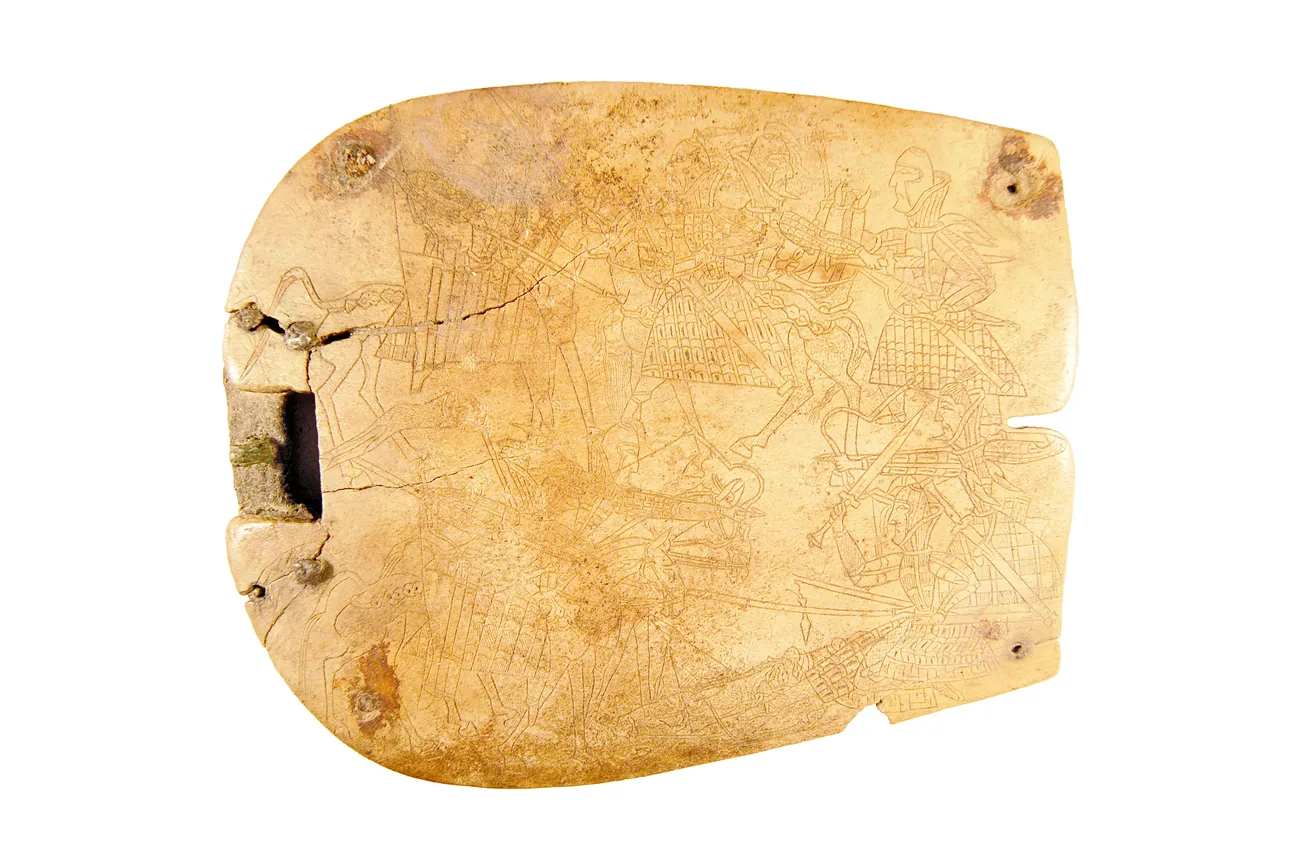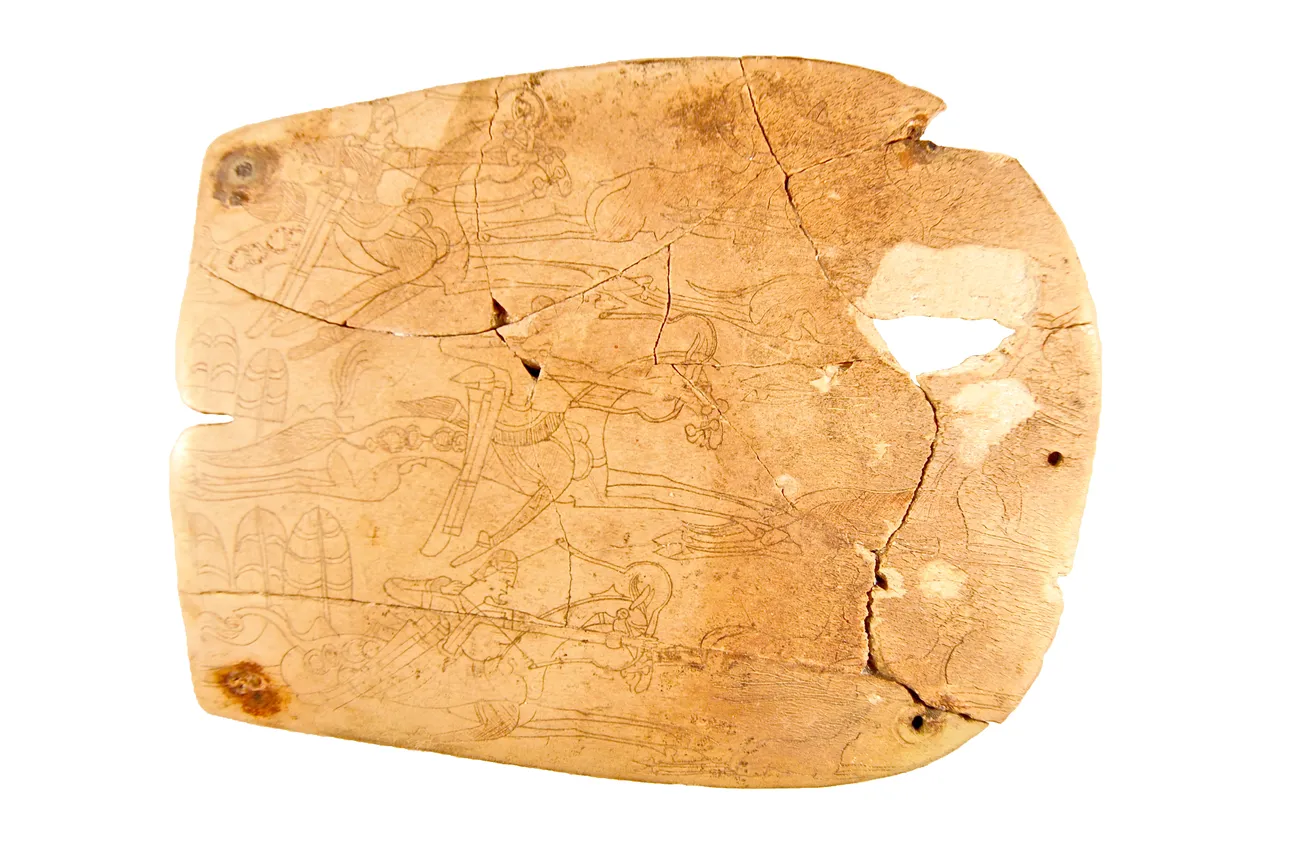For example the second of the large plates on the right of the belt shows an impressive picture of three archers on horseback hunting hoofed animals, fleeing in groups at maximum speed from their pursuers. Two argali (mountain sheep) with twisted horns are in the top row, three koulans (wild asses) are in the middle row, and three deer are in the bottom row.
The dynamism of the composition is created due to a well-known stylistic method used in Asia since the Bronze Age – all horses and animals being chased are shown in the so-called flying gallop. Stretched into a string, exaggeratedly elongated, with their legs thrown forward and backward, these participants in the action demonstrate the frantic pace of the race by their very appearance. As for the hunters, they are the already familiar stern warriors with mustaches and imperial beards, who have only replaced heavy armor and helmets with short caftans and leggings and are armed only with long-range bows.
Although hunting seems much safer and more peaceful after the horrors of war demonstrated nearby, its dangers cannot be underestimated! The riders race, dropping the reins and shooting into a gallop, which is very risky at such a speed, because as soon as the horse hits any hole or burrow with its hoof, it will collapse, breaking its legs, and the rider will fly out of the saddle and will be seriously injured.
Thus, both central plates of the ceremonial belt bear not just images of war and hunting as favorite pastime of nomads. They demonstrate activities that are equal in terms of danger and risk. We would point this out to researchers who devote all their attention to the battle scene, considering only it to be important for the interpretation of the decoration of this ceremonial belt.
You can learn more about the topic in the book-album "Sogdia: the Heart of the Silk Road" (XXXV volume) from the series "Cultural Legacy of Uzbekistan in the World Collections".
The main sponsor of the project is the oilfield services company Eriell-Group.


